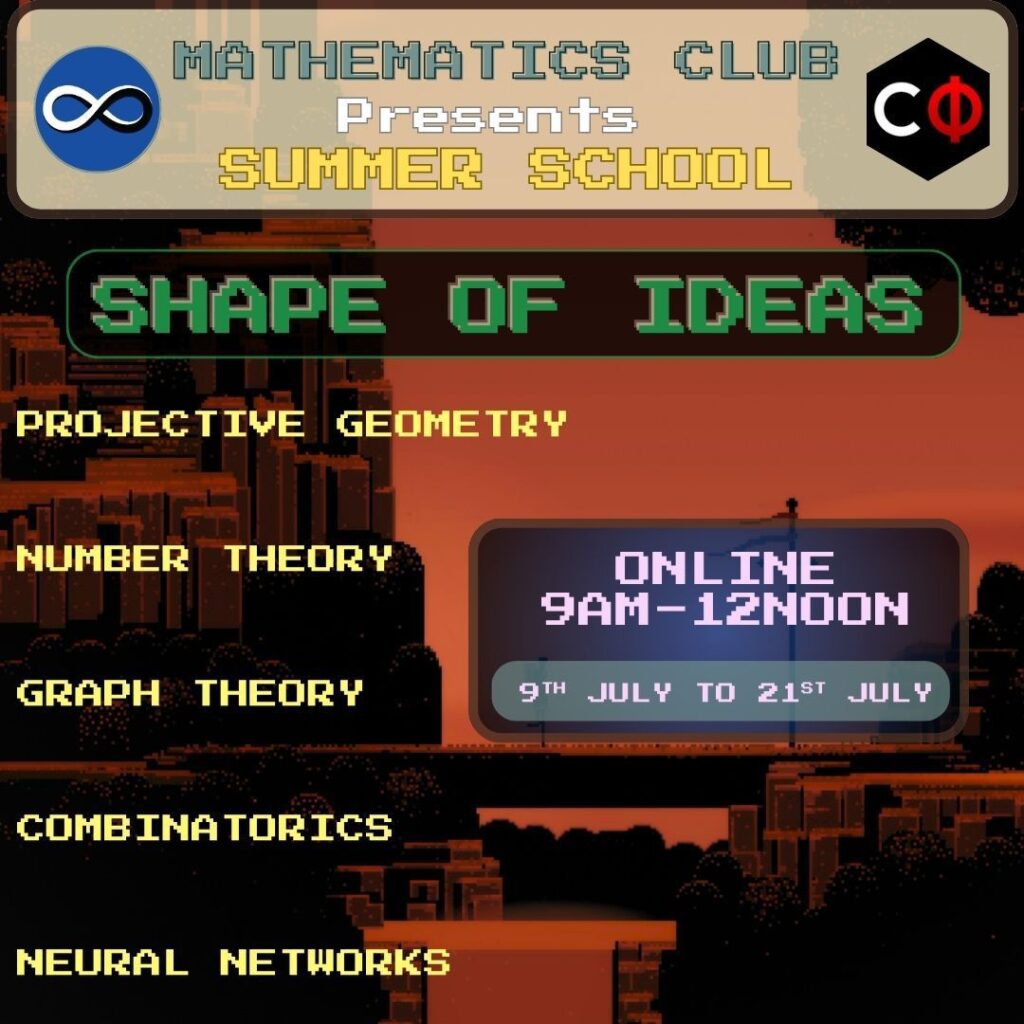
Session I : Projective Geometry (9 July 2025)
The sessions introduced projective geometry, covering its axioms, duality, homogeneous coordinates, projective plane (affine plane + line at infinity), transformations, cross ratio, and applications in graphics, vision, architecture, and art.
Resources
- Geometry Revisited
- Introduction to Geometry
- Euclidean and Non-Euclidean Geometry: Development and History
- Hartshorne: Algebraic Geometry — best read alongside:
- Shafarevich’s Basic Algebraic Geometry
- Mumford’s Complex Projective Varieties
- Harris’s Algebraic Geometry: A First Course
Presented by Bhavi and Smitali
Session II : Number Theory (11 July 2025)
The session introduces number theory, covering the Well Ordering Principle, induction, divisibility, Euclidean algorithm, modular arithmetic (including CRT and Fermat’s Little Theorem), continued fractions, Pell’s equation, totient and Möbius functions, and cryptographic applications like RSA encryption.
Resources
- Elementary Number Theory by David M. Burton
Presented By Arjun Arunachalam and Swaminath Shiju
Session III : Combinatorics (16 July 2025)
This is based on combinatorics. Permutations, combinations, counting with repetitions, inclusion-exclusion principle, pigeon hole principle and a questions based on them.
Resources
- Enumerative Combinatorics: Volume 2 by Richard P. Stanley
- ▶️ Watch: Catalan Numbers – Visual Explanation
Presented By Ayaan Nawaz
Session IV : Graph Theory (18 July 2025)
This session covers basics of graph theory, some basic terms associated with graphs, types of graphs, paths, handshake Theorem, chromatic number and some algorithms associated with graphs traversal.
Resources
- Graph Theory by Diesel
Presented By Ananth Madhav
Session V : Universal Approximation Theorem (21 July 2025)
This session traces the path from simple perceptrons to Multi-Layer Perceptrons, guided by the Universal Approximation Theorem.
It covers neuron modeling, network learning via gradient descent, and how neural nets can approximate any function.
By the end, you’ll see how math powers AI’s ability to model complex phenomena.Resources
Presented By Hemanth

